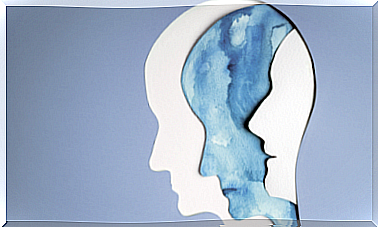The Shortest Path To Happiness Begins With A Smile

Are happy people smiling more or are people smiling happier?
The answer is that both are true. When we are happy or feel happy, we are in better harmony with the good things in and the beauty of our surroundings, and this state is reflected by a smile.
What is interesting is that this also happens in the other direction: the more we smile, even if it is forced in the beginning, the happier we feel.

An experiment conducted by Fritz Strack showed that you get a better mood from smiling. The experiment consisted of two groups of people who were shown funny comic strips. In one group, participants held a pencil in their mouths, extending their lips as if in a smile, while the other group maintained a neutral expression.
The results showed that those who smiled before thought the series were more fun; they thus had a stronger tendency to be in a good mood.
This is explained by the fact that the brain interprets facial muscles in the form of a smile as meaning that we are happy, regardless of the cause, and respond with a positive mood.
The mind works “with tendencies”. When we are sad or angry, we generally interpret what is happening to us in a more negative way, and we tend to remember and think about negative events. When we are happy, however, we interpret things in a more positive way and find more positive memories and thoughts.
So “forcing yourself” to smile can thus be a good way to get the body to assume a happier state, which in turn creates a good circle.
This is just one of the reasons why a smile is the first step towards happiness; there are more.
We live in a stressful world where we regularly come across people, but barely notice them: the baker, the bus driver, the doctor, the cashier in the store…
In these daily situations , kindness and a smile can bring about a subtle but very important change over time. An irrelevant meeting turns into a pleasant meeting.
Mirror neurons cause us to mimic the behavior of people around us. For example, when we are with an aggressive person, our inner reaction becomes defensive.
If we already have a smile on our face when we go out, it is likely that our smile will in most cases be answered, which gives us a good feeling of well-being and inner peace.
There is a reason why the first thing babies learn to do is respond to the smiles they get from their mothers or other people around them.

We are programmed to interpret a smile as a sign of security and to respond to it, creating a connection that communicates the message: “This is a safe place where you do not have to be defensive.”
A small gesture, such as a smile, can have a decisive influence on the atmosphere created between people.
There is nothing as fun as watching a baby laugh. If you have ever stood in front of one, you know that even the most serious adults can not help but smile and finally laugh when a baby does.
Laughter is, like smiling, in addition to an expression of joy also a form of communication that indicates that we are in a safe and friendly atmosphere.
Knowing how to laugh at your circumstances and yourself is very important so as not to drown in your problems and to find a way to keep your head above the surface.
A laugh at the right moment can break the most serious of tensions. Laughter breaks down barriers of unhappiness and brings us closer to happiness.
It’s not only because we feel good when we laugh, but also because we laugh together. Many good friendships have been built during evenings of laughter, and it is important that love couples can laugh. One of the first games we play with children is actually to tickle them so that they laugh.
Laughing with someone creates a connection, and these connections – good relationships you feel comfortable in – are irreplaceable for happiness.
As long as we remember to have a smile on our face, we will be happier in ourselves, but also send out happiness. And who knows, we might even lay the groundwork for a relationship.









